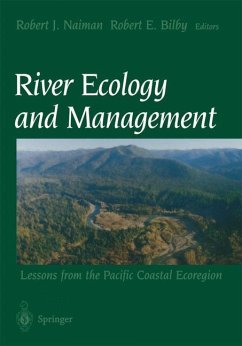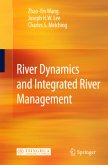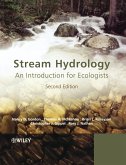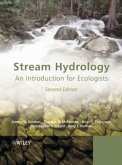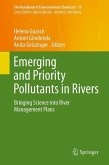Touching all parts of the natural environment and nearly all aspects of human culture, streams and rivers act as centers of organization within landscapes. They provide natural resources such as fish and clean water, transportation, energy, diffusion of wastes, and recreation. Today, with unprecedented demands on streams and rivers by an exponentially increasing human population, a basic ecological understanding of the structure and dynamics of running waters is essential for formulating sound management and policy decisions.The vast Pacific coastal ecoregion of the United States contains an extraordinary array of physical settings and examples of the range of dynamics associated with rivers and their management. The interface between the science and policy of natural resource management is illustrated by examples from this ecoregion, including the protection of riparian forest, the marbled murrelet, salmon, and amphibians.River Ecology and Management: Lessons from the Pacific Coastal Ecoregion includes sections on the Physical Environment, the Biotic Environment, Ecosystem Processes, Management, and Recommendations for the Future. Specific topics include channel dynamics, hydrology, water quality, microbial processes, primary production, fish and wildlife, riparian forest dynamics, organic matter and trophic dynamics, biogeochemical cycling, maintaining biodiversity, monitoring and assessment, economic perspectives, legal considerations, and the role of non-governmental organizations in river management.
As the vast expanses of natural forests and the great populations of salmonids are harvested to support a rapidly expanding human population, the need to understand streams as ecological systems and to manage them effectively becomes increasingly urgent. The unfortunate legacy of such natural resource exploitation is well documented. For several decades the Pacific coastal ecoregion of North America has served as a natural laboratory for scientific and managerial advancements in stream ecology, and much has been learned about how to better integrate ecological processes and characteristics with a human-dominated environment. These in sightful but hard-learned ecological and social lessons are the subject of this book. Integrating land and rivers as interactive components of ecosystems and watersheds has provided the ecological sciences with impor tant theoretical foundations. Even though scientific disciplines have begun to integrate land-based processes with streams and rivers, the institutions and processes charged with managing these systems have not done so successfully. As a result, many of the watersheds of the Pacific coastal ecoregion no longer support natural settings for environmental processes or the valuable natural resources those processes create. An important role for scientists, educators, and decision makers is to make the integration between ecology and con sumptive uses more widely understood, as well as useful for effective management.
As the vast expanses of natural forests and the great populations of salmonids are harvested to support a rapidly expanding human population, the need to understand streams as ecological systems and to manage them effectively becomes increasingly urgent. The unfortunate legacy of such natural resource exploitation is well documented. For several decades the Pacific coastal ecoregion of North America has served as a natural laboratory for scientific and managerial advancements in stream ecology, and much has been learned about how to better integrate ecological processes and characteristics with a human-dominated environment. These in sightful but hard-learned ecological and social lessons are the subject of this book. Integrating land and rivers as interactive components of ecosystems and watersheds has provided the ecological sciences with impor tant theoretical foundations. Even though scientific disciplines have begun to integrate land-based processes with streams and rivers, the institutions and processes charged with managing these systems have not done so successfully. As a result, many of the watersheds of the Pacific coastal ecoregion no longer support natural settings for environmental processes or the valuable natural resources those processes create. An important role for scientists, educators, and decision makers is to make the integration between ecology and con sumptive uses more widely understood, as well as useful for effective management.
"The wealth of science and literature in the book renders it a useful summary and reference for aquatic and watershed researchers, and most of the concepts and applications extend beyond the ecoregion....The lessons to be learned from the history, conceptual paradigms, research findings, and management approaches presented in this book are many and varied." --Ecology

